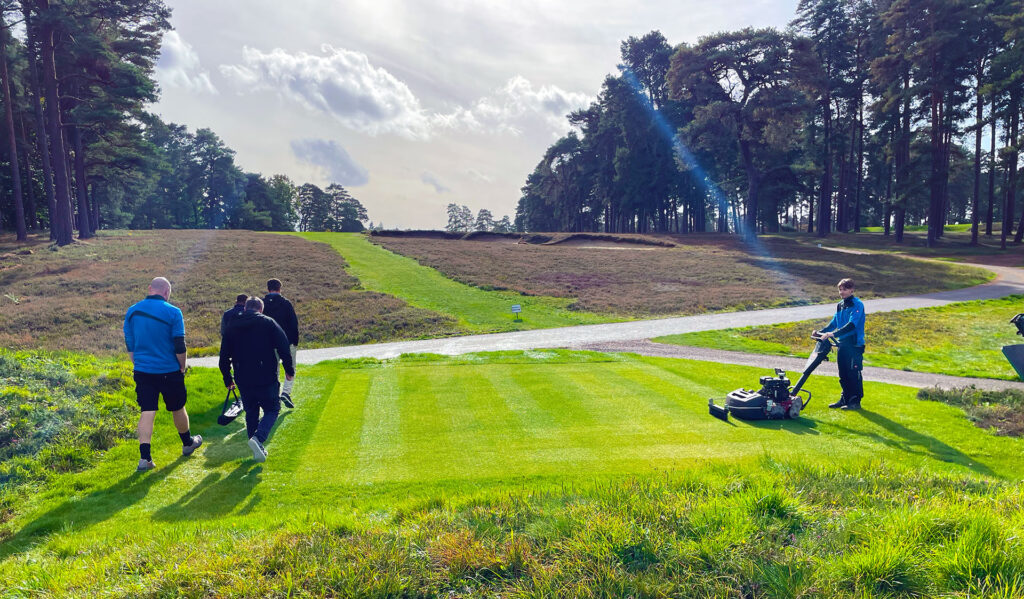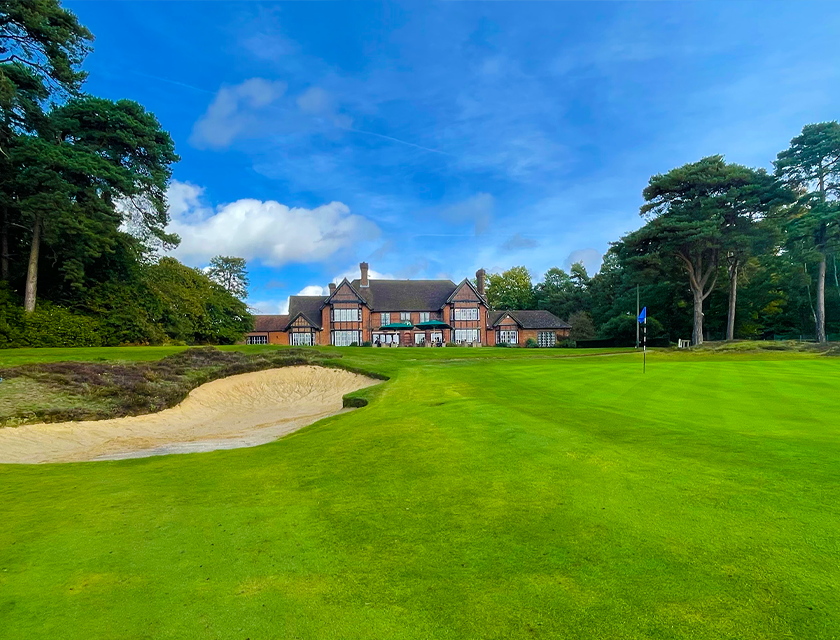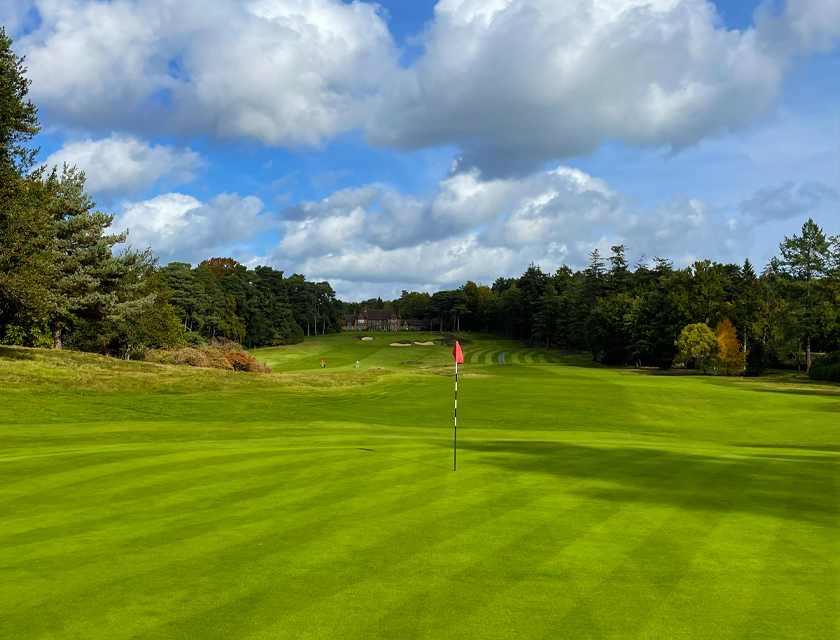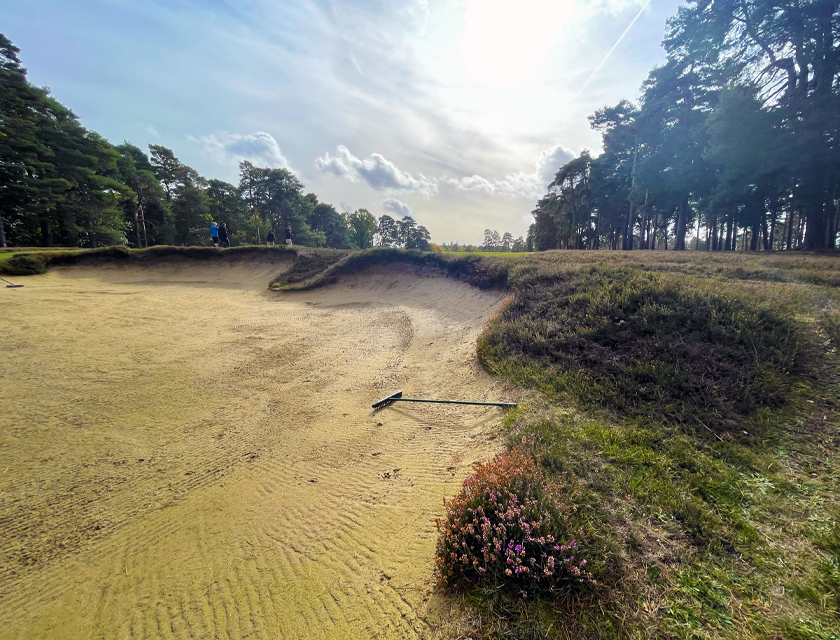A focused Tony Stephen keeps Swinley Forest healthier and more welcoming for his members and the growing number of visitors experiencing one of England’s most exciting golf clubs.
There is a sprinkling of charming golf clubs in the sandbelt west of London. Legendary golf course architect H.S. Colt designed many of these courses, and Swinley Forest in Ascot is undoubtedly one such heathland gem. The club is famed for its outstanding staff, stately clubhouse, and the remarkable camaraderie of its members. Swinley Forest is also known for being anything other than a typical club.
David Jones, best known as the U.K. Golf Guy, describes the place perfectly: “For many years, Swinley Forest was shrouded in secrecy and had almost mythical status in the world of golf. It was designed by Harry Colt while he was Secretary at Sunningdale and opened in 1909. The club was a bastion of the English upper classes and was to become one of the most exclusive clubs anywhere in the country.”
The golf course – and the incredible culture of the club – are what’s given it such an enduring reputation. As Ran Morrissett of Golf Club Atlas notes: “Much has been written about the serenity and ambiance found at Swinley Forest. It is indeed deserved and provides the golfer with an unmatched solitude from which he can enjoy a game. However, make no mistake: Swinley couples outstanding golf holes with its first-rate atmosphere.”
Recently, the members determined to modernize without losing the sense of identity that’s always made it a special place. And, for the past three years, head greenkeeper Tony Stephen’s charge was to lengthen the course for today’s player and to bring back the firmness and fun that had become obscured by overgrown trees and giant rhododendrons. With diminished sight lines and air movement throughout the course, change was needed to help visual and playability aesthetics.
Tony Stephen had spent seven years as the deputy head greenkeeper, so he knew how to address these issues. When he became head greenkeeper, he did so with a mandate from the members to take the course they love so much to new heights.
Tony and his small but passionate team are making the most of that opportunity, which seems to be paying off in spades. Swinley Forest was recently ranked 5th best course in the nation. We talked with Tony last fall during our Aquatrols On The Road visit to the U.K. We wanted to find out more about what he’s doing to help propel Swinley Forest up the ranks of English clubs and how that helps put more fun into a course that’s so well known for it.
What were your priorities when you became head greenkeeper?
First and foremost, our priority was to improve the quality of the surfaces and firm up the greens. We want to bring back the natural state of the firm-and-fast play associated with heathland courses. Once we did that, it was all about modernizing the golf course. We built new tees and lengthened them by a few hundred yards. That work was overdue, but to some extent, that was a business decision that made us more attractive to outside play.
It’s been a long, fantastic experience from where we were to now. And even though we completed the significant lengthening work, we still have plenty to do. Fortunately, we have great support from the committee.

How much of a difference did the rhododendron and tree removal make to the turf quality?
The difference was absolutely huge. Airflow around greens is vastly improved. Take hole number 12, for example: a bank of rhododendrons blocked it, and over the winter, it formed its own microclimate. The green wouldn’t defrost. In the summer, you could feel the humidity. Within a month of clearing it, the grass coverage was instantly healthier. It’s drier, firmer, and there’s less disease. The frost is now equivalent to the rest of the course. That’s the consistency we desire.
Your motto has been consistent from place to place around the property. How else have you been able to achieve that?
Water management has been crucial to our course efforts. 2022 was challenging as we dealt with a dry spring, summer, and autumn. This was coupled with extreme heat, and we are not accustomed to 40*C (over 100*F) heat. We found Zipline gave us a lot of consistency with water management.
Do you fear extreme temperatures and drought will be the new normal?
I think the temperature was a bit of an anomaly. To have three days in the 40s is extreme, and I’d be surprised if it continues. The pattern seems to be that it gets sweltering about every three years. But this is the driest we’ve seen through September.
You’ve started measuring clip volume. What have you learned?
It is the first year we have measured clip volume. We measure volume on one green and try to keep that volume around 7 liters. We adjusted the PGR program a little because we found it differed occasionally. Mainly we’re trying to use regulation to push the bentgrass population.
What’s on the greens besides Poa annua?
The greens are primarily old brown-top colonial bent that goes mad in the spring and has a darker color. You must keep on top of it until the Poa kicks in.
How do you show the members what needs to be done and communicate about your program?
We do reports for the green chairman, secretary, committee, and such. But the improvements on the course have helped us build the overall trust of the members. I report to the secretary on conditions daily so he can communicate with members. They know there’s a benefit when they see the Verti-Drain go out. That honeymoon period will end sooner or later, but it’s good right now (laughs).

What do you want people to know about you and your team?
We’re a hardworking, honest team. We just go out and do the best we can for this course. We’re here to present it at its best daily for whoever turns up.
We are a team of ten but usually have seven working on the 300-acre course. We’re compared favorably to some much larger staffed golf courses. It’s honest and hard work, and everyone has pride in the golf course.
How do you and Alan Pierce from Aquatrols work together?
I don’t have time to get around to other courses, so it helps to bounce ideas off someone who does, like Alan. Some days you get tunnel-visioned on your course, so it’s valuable to have feedback from him. It’s like our Zipline program; we work back and forth and try things until we find a solution. It’s reassuring because little things like that make a big difference.
It sounds like you and Alan can have candid conversations to find the right solutions.
That’s what it’s all about; honesty is how you build relationships.






Comments are closed.